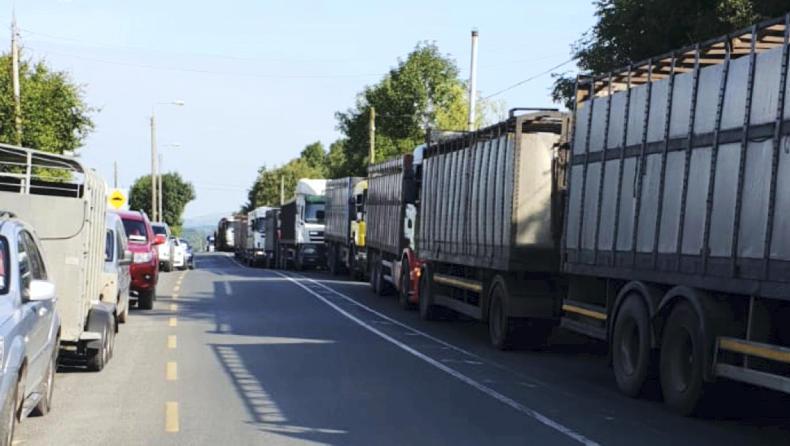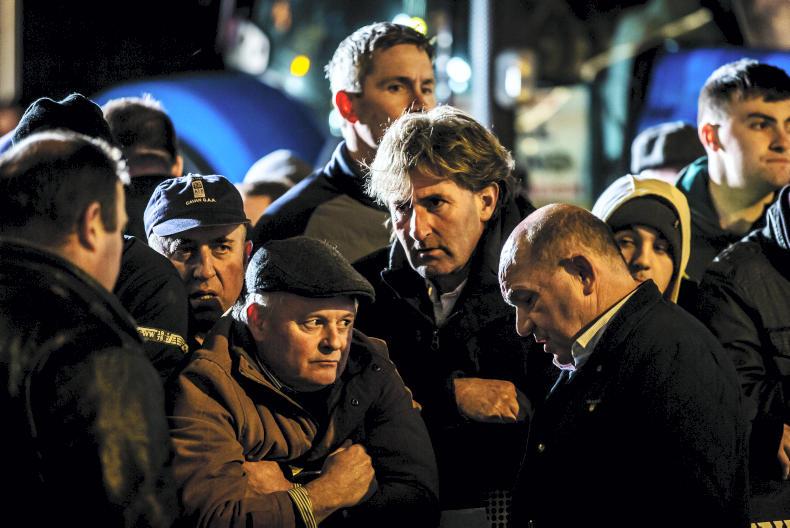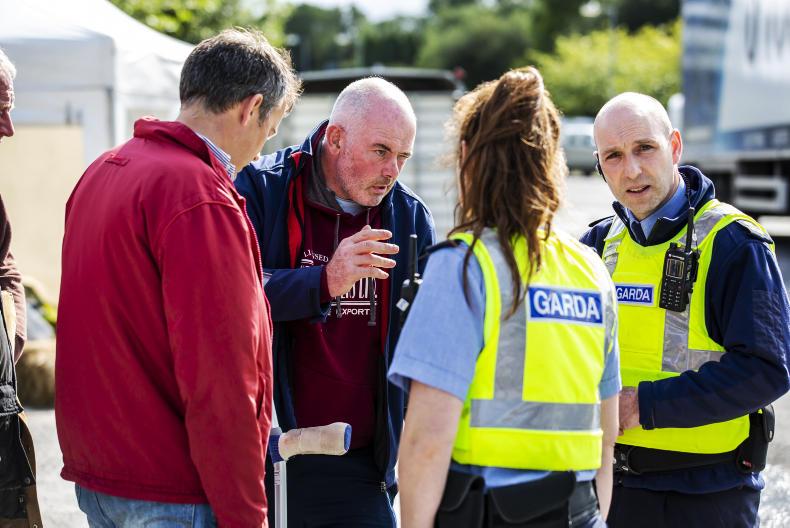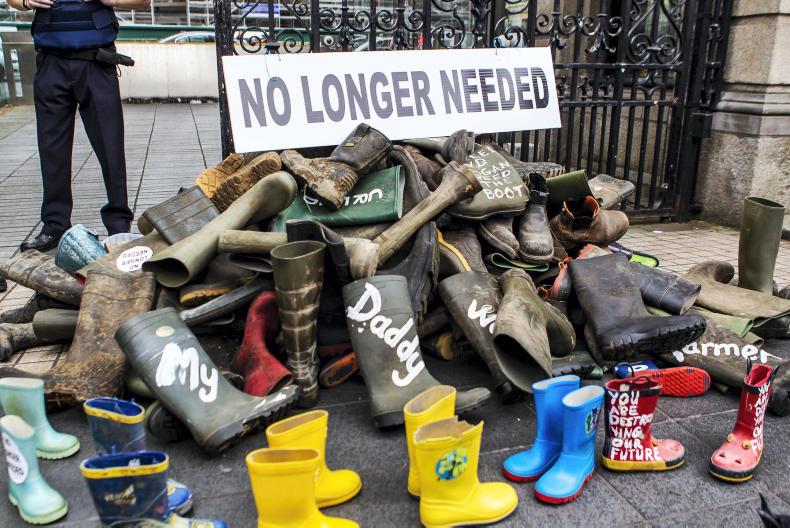It’s been almost two years since I sat down with Hugh Doyle and Eamon Corley to talk about the newly-formed Beef Plan Movement.
Full of enthusiasm at the time, both men believed that they could genuinely change things around in the beef industry and reverse the losses being made by beef finishers and improve the profitability of drystock farmers, in general.
A countrywide campaign was launched and farmers turned out in their hundreds to marts, parish halls and hotels during the winter of 2018, paying €10 apiece to hear from the leaders Eamon Corley and Hugh Doyle about the 86-point beef plan and join the movement.
The group’s communication method was WhatsApp and county groups were set up to rally members into action. The initial phase saw lots of communication among members and a general willingness to do anything for the organisation.
The Department of Agriculture, meat processors, Meat Industry Ireland, Bord Bia, ICBF, Teagasc and many others came in for severe criticism from the movement at meetings, with much of the blame laid at the Minister for Agriculture’s door.
This week also marks the first anniversary of the Beef Plan protests at factory gates across the country.

Senior gardaí from Bandon garda station talking with protesters at the Beef Plan Movement protest outside ABP, Bandon, Co Cork.
Protests took place outside 18 beef and sheep plants, with thousands of farmers taking part in the early stages. Angry scenes, blocked cattle lorries, farmers getting hurt and reduced factory kills all culminated in court injunctions being issued to halt protests.
Other farmers took up the mantle, including the confusingly named individual farmers and independent farmers, but all eventually stood down at the end of September with no real progress made and an overhang in finished cattle supplies that kept the lid on the price for the following months.
It’s currently unclear about where the organisation goes from here.
One side of the now bitterly divided Beef Plan organisation has held a number of successful finished cattle sales around the country in recent weeks but the level of communication on WhatsApp groups has dropped from 30 messages a day to one every few weeks.

Cattle lorries backed up at the Beef Plan protest in Liffey Meats, Ballyjamesduff, Co Cavan.
The current COVID-19 restrictions probably aren’t helping progress but the likelihood of both sides finding common ground is becoming less likely.
Speaking to the Irish Farmers Journal, one of the Beef Plan’s founders Hugh Doyle said: “Mistakes were made by everybody but we have to move on from that. We are very close to starting mediation. Both sides’ solicitors have agreed on a mediator who is a senior counsel and we are hopeful we can all sit down around a table in the coming weeks.”
On farmer issues, he said: “The same issues are still there, low profitability, lack of transparency and to be honest we haven’t solved those issues, which is a failure on our part.”

Hugh Doyle talks to the Independent Farmers of Ireland during their tractor protest on Kildare Street, Dublin, in November 2019. \ Philip Doyle
“Before you go to war you need an army. Factories will be sent a list of fair demands first and depending on the response, we will decide on the next course of action but it could involve holding back cattle until we get some meaningful change. If farmers continue to take €3.70/kg for their suckler beef, they will go out of business anyway so this is a last stand.”
– Hugh Doyle,
November 2018
“If you look, and the point has been very well made, there is a serious issue in the sector, there is price pressure. The sector exports 90% of the beef it produces and the price that is being paid is at the average being paid in those markets. There is beef market depression.”
– Cormac Healy,
Meat Industry Ireland,
August 2019
“I think we need to be careful we don’t do damage to a sector that has been extraordinarily successful in lobbying by being together. That model in terms of interaction between farming, agriculture and Government and policymakers is being challenged too right now and it’s a big worry for me and big concern for Minister Creed as well, which is why we need a structure.”
– Minister Simon Coveney, who served as Tánaiste in September 2019
“We’re aiming for a target of 50% of the country’s beef cattle to be sold through producer groups in the next three years.”
– Eamon Corley,
November 2018
“Stand with us, we will re-strategise. Don’t allow yourself to be goaded into doing something that could end the whole protest.”
– Hugh Doyle speaking to factory
protesters in August 2019

Vice chair of the Beef Plan in Clare, Rory Slattery and chair of the Beef Plan in Clare, Joseph Woulfe negotiate with gardaí at protest outside Kepak in Ennis.\ Philip Doyle
Beef Plan protests: the upsides
The establishment of purchasing groups facilitated by Beef Plan has resulted in savings for farmers. Two producer groups have also been set up, with one claiming to be processing 300 head on a weekly basis. Ironically, some of the cattle being procured have to meet the specifications that the movement rallied against 12 months ago.

The Beef Plan protest outside the Dáil. \ Philip Doyle
One could argue that were it not for the protests, the Beef Market Taskforce wouldn’t have been formed. All farm organisations took part in these talks and achieved a number of concessions for beef finishers. The introduction of a new bonus of 8c/kg for steers and heifers aged between 30 to 36 months was a win for farmers. An increase of two-thirds in the current in-spec bonus for steers and heifers, from 12c/kg to 20c/kg has also increased returns. The introduction of a new in-spec bonus of 12c/kg for steers and heifers under 30 months in the categories of grade O- and fat score 4+ also widened the net for bonus payments.
Bord Bia also developed a beef market price index model based on three components: cattle price index, beef market price index (retail and wholesale) and an offal price indicator.
The movement raised awareness around some important issues in the sector and made some within the industry sit up and think about working harder for farmers.
Beef Plan protests: the downsides
The majority of the Beef Plan Movement’s 86-point plan remain unaddressed. It was always going to be a tall order for any organisation to address so many issues.
The big failure has been the inability of the organisation to deliver price increases as promised to members. Standing up at mart meetings alongside individuals claiming that €5.20/kg was available for beef to go to China tricked farmers into thinking this was possible and the thinking was that nobody was going to stand in their way in getting it.

Farmers at the Beef Plan protest outside Kepak in Ennis. \ Philip Doyle
The distinct lack of leadership and loss of control within the organisation at the end of the protests has soured many farmers and resulted in the emergence of other farmer groups, all with different agendas, which won’t serve farmers best.
The infighting and division within the Beef Plan Movement has also weakened the organisation, focusing on internal politics rather than fighting for farmers, what they set out to do.
It’s been almost two years since I sat down with Hugh Doyle and Eamon Corley to talk about the newly-formed Beef Plan Movement.
Full of enthusiasm at the time, both men believed that they could genuinely change things around in the beef industry and reverse the losses being made by beef finishers and improve the profitability of drystock farmers, in general.
A countrywide campaign was launched and farmers turned out in their hundreds to marts, parish halls and hotels during the winter of 2018, paying €10 apiece to hear from the leaders Eamon Corley and Hugh Doyle about the 86-point beef plan and join the movement.
The group’s communication method was WhatsApp and county groups were set up to rally members into action. The initial phase saw lots of communication among members and a general willingness to do anything for the organisation.
The Department of Agriculture, meat processors, Meat Industry Ireland, Bord Bia, ICBF, Teagasc and many others came in for severe criticism from the movement at meetings, with much of the blame laid at the Minister for Agriculture’s door.
This week also marks the first anniversary of the Beef Plan protests at factory gates across the country.

Senior gardaí from Bandon garda station talking with protesters at the Beef Plan Movement protest outside ABP, Bandon, Co Cork.
Protests took place outside 18 beef and sheep plants, with thousands of farmers taking part in the early stages. Angry scenes, blocked cattle lorries, farmers getting hurt and reduced factory kills all culminated in court injunctions being issued to halt protests.
Other farmers took up the mantle, including the confusingly named individual farmers and independent farmers, but all eventually stood down at the end of September with no real progress made and an overhang in finished cattle supplies that kept the lid on the price for the following months.
It’s currently unclear about where the organisation goes from here.
One side of the now bitterly divided Beef Plan organisation has held a number of successful finished cattle sales around the country in recent weeks but the level of communication on WhatsApp groups has dropped from 30 messages a day to one every few weeks.

Cattle lorries backed up at the Beef Plan protest in Liffey Meats, Ballyjamesduff, Co Cavan.
The current COVID-19 restrictions probably aren’t helping progress but the likelihood of both sides finding common ground is becoming less likely.
Speaking to the Irish Farmers Journal, one of the Beef Plan’s founders Hugh Doyle said: “Mistakes were made by everybody but we have to move on from that. We are very close to starting mediation. Both sides’ solicitors have agreed on a mediator who is a senior counsel and we are hopeful we can all sit down around a table in the coming weeks.”
On farmer issues, he said: “The same issues are still there, low profitability, lack of transparency and to be honest we haven’t solved those issues, which is a failure on our part.”

Hugh Doyle talks to the Independent Farmers of Ireland during their tractor protest on Kildare Street, Dublin, in November 2019. \ Philip Doyle
“Before you go to war you need an army. Factories will be sent a list of fair demands first and depending on the response, we will decide on the next course of action but it could involve holding back cattle until we get some meaningful change. If farmers continue to take €3.70/kg for their suckler beef, they will go out of business anyway so this is a last stand.”
– Hugh Doyle,
November 2018
“If you look, and the point has been very well made, there is a serious issue in the sector, there is price pressure. The sector exports 90% of the beef it produces and the price that is being paid is at the average being paid in those markets. There is beef market depression.”
– Cormac Healy,
Meat Industry Ireland,
August 2019
“I think we need to be careful we don’t do damage to a sector that has been extraordinarily successful in lobbying by being together. That model in terms of interaction between farming, agriculture and Government and policymakers is being challenged too right now and it’s a big worry for me and big concern for Minister Creed as well, which is why we need a structure.”
– Minister Simon Coveney, who served as Tánaiste in September 2019
“We’re aiming for a target of 50% of the country’s beef cattle to be sold through producer groups in the next three years.”
– Eamon Corley,
November 2018
“Stand with us, we will re-strategise. Don’t allow yourself to be goaded into doing something that could end the whole protest.”
– Hugh Doyle speaking to factory
protesters in August 2019

Vice chair of the Beef Plan in Clare, Rory Slattery and chair of the Beef Plan in Clare, Joseph Woulfe negotiate with gardaí at protest outside Kepak in Ennis.\ Philip Doyle
Beef Plan protests: the upsides
The establishment of purchasing groups facilitated by Beef Plan has resulted in savings for farmers. Two producer groups have also been set up, with one claiming to be processing 300 head on a weekly basis. Ironically, some of the cattle being procured have to meet the specifications that the movement rallied against 12 months ago.

The Beef Plan protest outside the Dáil. \ Philip Doyle
One could argue that were it not for the protests, the Beef Market Taskforce wouldn’t have been formed. All farm organisations took part in these talks and achieved a number of concessions for beef finishers. The introduction of a new bonus of 8c/kg for steers and heifers aged between 30 to 36 months was a win for farmers. An increase of two-thirds in the current in-spec bonus for steers and heifers, from 12c/kg to 20c/kg has also increased returns. The introduction of a new in-spec bonus of 12c/kg for steers and heifers under 30 months in the categories of grade O- and fat score 4+ also widened the net for bonus payments.
Bord Bia also developed a beef market price index model based on three components: cattle price index, beef market price index (retail and wholesale) and an offal price indicator.
The movement raised awareness around some important issues in the sector and made some within the industry sit up and think about working harder for farmers.
Beef Plan protests: the downsides
The majority of the Beef Plan Movement’s 86-point plan remain unaddressed. It was always going to be a tall order for any organisation to address so many issues.
The big failure has been the inability of the organisation to deliver price increases as promised to members. Standing up at mart meetings alongside individuals claiming that €5.20/kg was available for beef to go to China tricked farmers into thinking this was possible and the thinking was that nobody was going to stand in their way in getting it.

Farmers at the Beef Plan protest outside Kepak in Ennis. \ Philip Doyle
The distinct lack of leadership and loss of control within the organisation at the end of the protests has soured many farmers and resulted in the emergence of other farmer groups, all with different agendas, which won’t serve farmers best.
The infighting and division within the Beef Plan Movement has also weakened the organisation, focusing on internal politics rather than fighting for farmers, what they set out to do.












 This is a subscriber-only article
This is a subscriber-only article










SHARING OPTIONS: